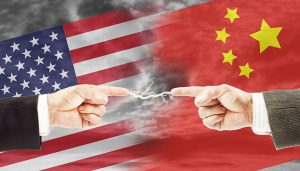 Trade war
Trade war
This morning, China is reportedly set to put new tariffs on $75 billion worth of U.S. imports as of September 1st. This would be in retaliation for tariffs put on Chinese goods in the U.S. by the Trump administration. The tariffs would range between 5-10% on these as yet unspecified American goods.
Pre-market indexes this Friday slipped notably: from +65 points on the Dow following a dovish interview from St. Louis Fed President James Bullard to -100 points on the Chinese report in roughly two minutes’ time. (The Down is now down 150 points at this time.) Though when we look a little closer, while $75 billion is no one’s idea of a small number, it pales in comparison to the amount of tariffs the U.S. has already placed on Chinese goods.
So the takeaway remains this: China does not import anywhere near as much from the U.S. as the U.S. does from China. No doubt this was part of President Trump’s calculations taking on Chinese/American trade last fall, when he memorably told the country that trade wars are “easy to win.” Yet the market has taken a hit on the assertion that this trade war is not going away anytime soon.
This announcement comes at an interesting time — just a couple hours before Fed Chair Jay Powell’s press conference from the Fed retreat in Jackson Hole, WY. Whereas he may have been trying to find a way to explain the easing of interest rates — 25 basis points last months and possibly another 25 points when the FOMC meets next month — while most fundamentals of the U.S. economy still appear sound, this new front of the trade war may give Powell an easy path toward explaining the Fed’s dovish turn.
Adding to this, the minutes from the last FOMC meeting were released earlier this week. They depicted far from a consensus on cutting rate cuts, making the odds of another cut slightly less inevitable. Regardless, analysts will be paying close attention to Powell’s phrasing as a way of reading the tea leaves ahead of September’s meeting. And depending what is said, his speech (at 10am ET) has real potential to push trading in either direction.